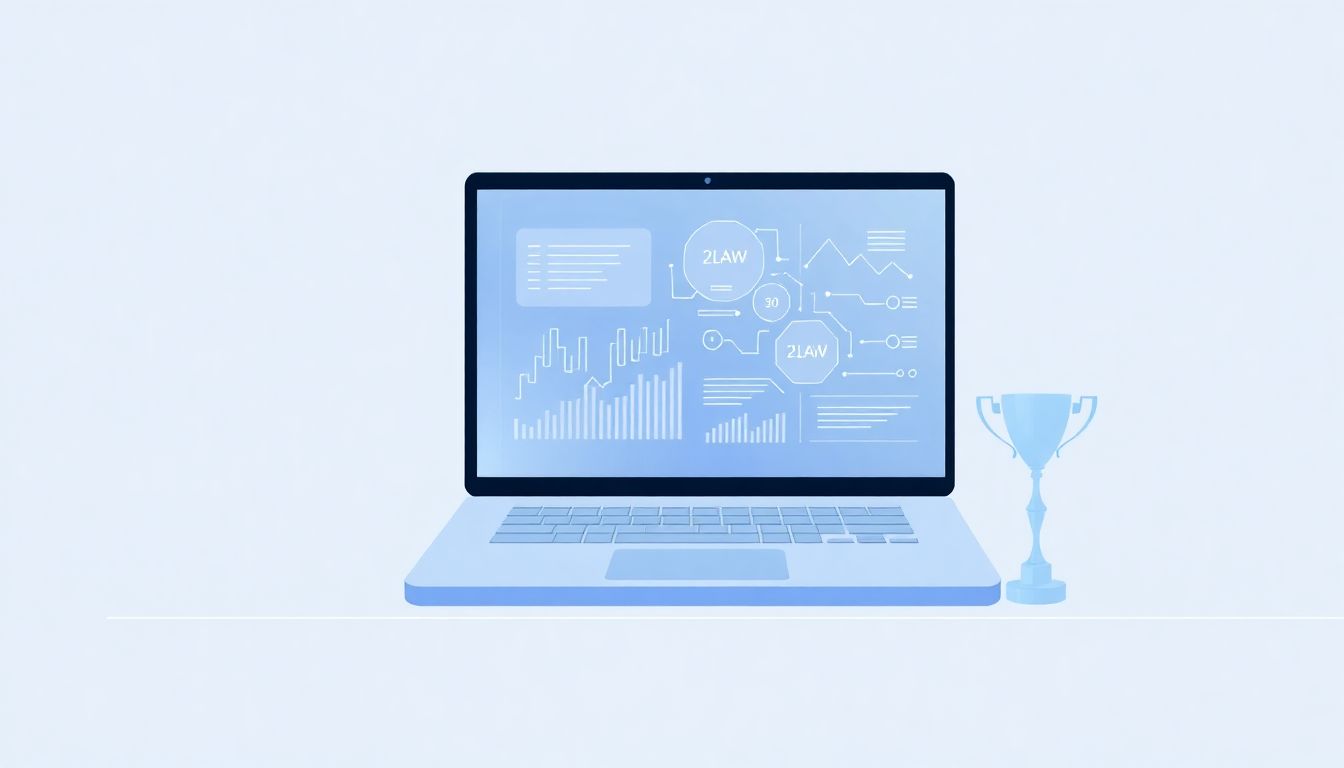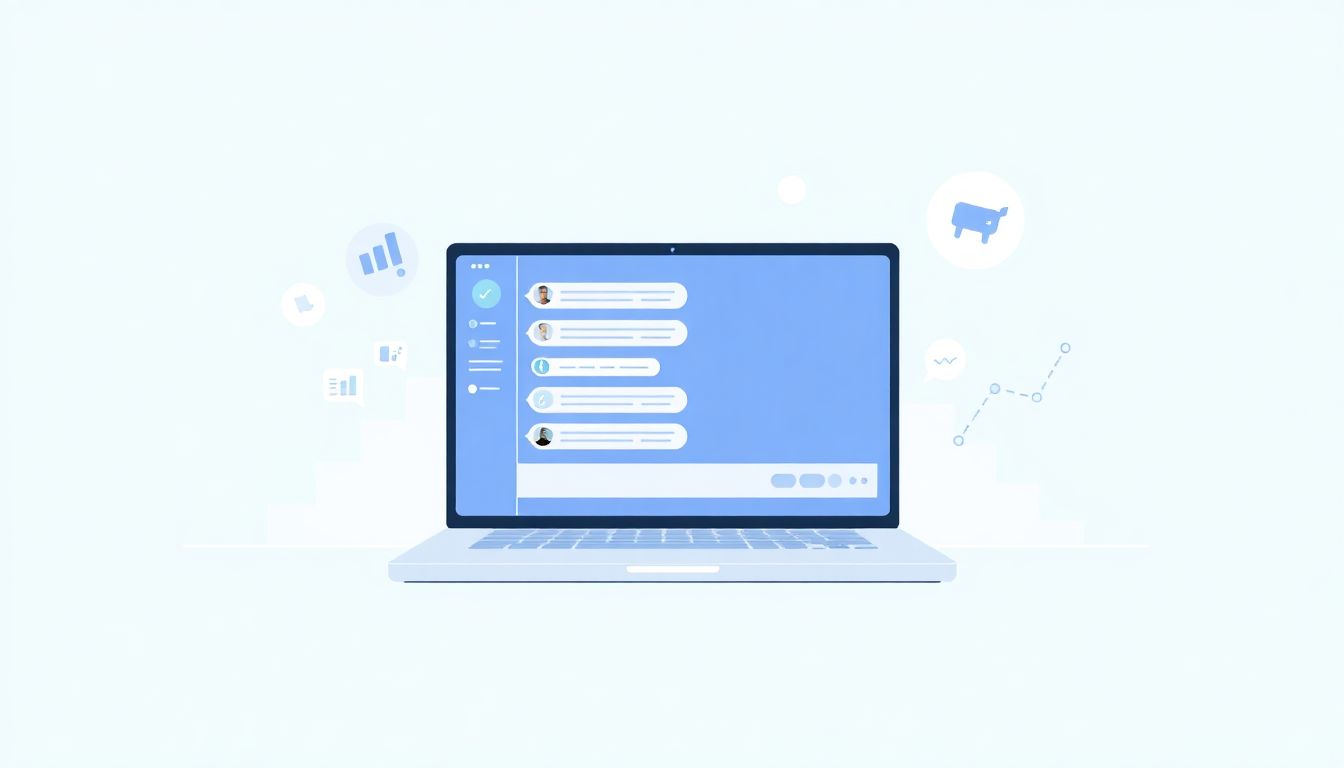Are you feeling a bit overwhelmed by the constant changes in the competitive landscape? You’re not alone—many businesses struggle to keep track of what their competitors are up to. It can be tough to make informed decisions without the right intel at your fingertips.
But what if I told you that ChatGPT could be your secret weapon? Stick around, and I’ll show you how this AI can help you gather valuable insights and develop a competitive edge that leaves your rivals in the dust.
From identifying key areas for analysis to automating your competitive monitoring, we’ll explore practical ways to harness ChatGPT. Let’s dive in and transform the way you approach competitive intelligence!
Key Takeaways
- Use ChatGPT to gather insights about your industry by asking it to summarize current trends.
- Conduct competitor analysis by comparing strengths and weaknesses with specific prompts.
- Identify key areas for analysis by defining market segments and asking about competitors and KPIs.
- Formulate effective questions to gain detailed insights, mixing open-ended and closed questions.
- Leverage ChatGPT for SWOT analysis by assessing competitors’ strengths, weaknesses, opportunities, and threats.
- Extract market trends and insights by asking about emerging trends and seasonal spending influences.
- Analyze customer feedback to identify competitors’ strengths and weaknesses and improve your offerings.
- Automate competitive monitoring by setting up weekly news alerts and performance metrics tracking.

How to Use ChatGPT for Gaining Competitive Intelligence
Using ChatGPT for competitive intelligence is all about harnessing AI’s capability to collect and analyze data efficiently.
Start by asking ChatGPT to summarize key insights about your industry.
For instance, use the prompt: “Summarize the current trends in [your industry].”
This provides a broad baseline of knowledge to better understand the landscape.
Next, you can narrow your focus by requesting competitor analyses.
Try: “Analyze the strengths and weaknesses of [competitor 1] compared to [competitor 2].”
This helps pinpoint where you stand in the market.
ChatGPT can evolve with your inquiries and reveal deeper market dynamics.
Remember, AI-driven insights are only as good as the questions you ask.
So, use concise and targeted prompts for refined outputs and use them to shape your competitive strategy.
Identifying Key Areas for Competitive Analysis with ChatGPT
Identifying crucial areas for competitive analysis starts with defining your market segmentation.
Ask ChatGPT: “List the key market segments for [your industry].”
From there, you can identify competitors by saying: “Who are the main competitors in [specific segment]?”
Key performance indicators (KPIs) are essential metrics for comparison, so prompt with: “What are the KPIs I should consider when analyzing [your industry]?”
Next, leverage benchmarking by asking: “Provide a competitive benchmark on [specific metric] for my industry.”
With these insights, you’ll be equipped to conduct a thorough SWOT analysis later.
An effective competitive analysis also considers market positioning, which you can fine-tune by asking ChatGPT: “How do [competitor 1] and [competitor 2] position themselves in terms of pricing and features?”
Creating Effective Questions for Competitive Research Using ChatGPT
Formulating effective questions is crucial for in-depth competitive research.
Start with open-ended inquiries to encourage detail, for example: “What are the unique selling propositions of [competitor]?”
For more specific results, develop closed questions like: “Does [competitor] offer customer support during weekends?”
Mix these techniques to get both broad insights and granular details.
Utilizing ChatGPT to design surveys can also provide structured data; ask: “Create a survey to gauge customer satisfaction with [competitor’s product].”
This will help you collect actionable customer insights.
Another great prompt is: “List potential weaknesses of [competitor] based on recent customer reviews.”
These focused queries can yield valuable data you may not find elsewhere.
Leveraging ChatGPT for SWOT Analysis of Competitors
To conduct a SWOT analysis of competitors using ChatGPT, start with their strengths.
Use the prompt: “Identify the strengths of [competitor] in the [specific market].”
This can highlight unique advantages they may have.
Next, recognize weaknesses by asking: “What are common complaints about [competitor’s product]?”
Then, think about opportunities; prompt with: “What market opportunities does [competitor] have in 2023?”
Finally, don’t forget to assess threats: “What external threats does [competitor] face?”
This comprehensive approach to SWOT analysis will give you a clearer picture of your competitive landscape.
Once you have these insights, you can refine your strategy accordingly to better position your business.

Extracting Market Trends and Insights with ChatGPT
ChatGPT can effectively extract market trends and insights, setting a strong foundation for informed decision-making.
Start by asking ChatGPT for specific insights into emerging trends: “What are the top emerging trends in [your industry]?”
This straightforward prompt will give you a snapshot of current and upcoming movements in your sector.
For deeper analysis, try: “Analyze how social media trends are influencing consumer behavior in [specific market].”
This helps you understand the context around trends and how they can affect your strategy.
Inquire about industry data by asking: “Summarize key market reports related to [your industry] from the past year.”
This way, you gather compiled information that is easily digestible.
To broaden your analysis, ask for comparisons: “How do market trends in [your region] differ from those in [another region]?”
Understanding geographical variances can open new opportunities for your business.
A great follow-up would be: “Identify any seasonal trends affecting consumer spending in [your industry].”
With this information, you can adjust your marketing and sales strategies accordingly.
Using ChatGPT to Analyze Customer Feedback on Competitors
Analyzing customer feedback on competitors is essential for gaining insights into their strengths and weaknesses.
Start with a simple prompt: “Summarize customer reviews of [competitor’s product or service].”
This will give you a general overview of customer sentiments toward the competitor.
To dig deeper, try: “What common complaints do customers have about [competitor]?”
This reveals persistent issues that you might capitalize on in your offerings.
You can also ask, “What do customers praise most about [competitor]?”
Understanding their strengths can help you benchmark your own offerings effectively.
Another valuable prompt could be: “Analyze social media feedback on [competitor’s brand].”
This gives you real-time insights into customer perceptions and engagement levels.
For a comprehensive view, ask: “What gaps in customer experience are evident from feedback on [competitor]?”
This can guide you on positioning your product to address those unmet needs.
Automating Competitive Monitoring with ChatGPT
Automating competitive monitoring using ChatGPT helps in staying updated without constant manual effort.
Start by asking: “Set up a plan for monitoring [competitor’s name] news and updates weekly.”
This creates a systematic approach to gathering information over time.
You can also request, “Generate a list of alerts for any new product launches by [competitor].”
By setting these alerts, you stay informed on competitor activities without tiring manual searches.
For research efficiency, prompt with: “Create a checklist of metrics to monitor for tracking [competitor] performance.”
Having a set checklist simplifies the monitoring process significantly.
Next, consider asking: “Suggest tools or platforms that integrate with ChatGPT for automated alerts and notifications.”
This helps you streamline all your competitive intelligence efforts.
If you want insights on broader industry changes, inquire: “Summarize key shifts in the competitive landscape over the last month.”
This ensures that you’re not only focused on one competitor but are aware of the overall dynamics that could impact your market.

Case Studies: Successful Use of ChatGPT for Competitive Intelligence
When it comes to implementing ChatGPT for competitive intelligence, real-world case studies illustrate its effectiveness.
For instance, a tech startup used ChatGPT to gather competitor pricing information and customer reviews.
They asked: “Summarize pricing strategies of competitors in the [specific tech niche].”
This helped them adjust their pricing model to stay competitive.
Another example is a retail company that powered market trend analysis through ChatGPT.
Their prompt was: “What are the latest consumer trends in [retail sector]?”
This not only highlighted current trends but also provided insights that shaped their marketing strategy.
A marketing agency utilized ChatGPT to analyze customer feedback and sentiments for their largest client.
They directed ChatGPT with: “Identify strengths and weaknesses highlighted in customer reviews of [client’s brand].”
The insights helped tailor their communication and product offerings to better align with consumer expectations.
These case studies exemplify how leveraging ChatGPT can yield actionable insights that drive strategic decisions.
Best Practices for Implementing ChatGPT in Your Competitive Strategy
Implementing ChatGPT into your competitive strategy can be seamless if you follow best practices.
Start with clear objectives for what you want to achieve; ask: “What specific insights do I want from ChatGPT regarding my competitors?”
Involve your team in crafting effective prompts; collective brainstorming can lead to more rounded questions.
Use varied prompt types to gather comprehensive insights; for example, “List the strengths of my top three competitors” as well as “What emerging trends should I watch in my industry?”
It’s essential to regularly review the outputs from ChatGPT to ensure alignment with your market dynamics.
Try asking: “What changes in my competitive landscape have occurred in the past month?” to keep your strategy updated.
Don’t hesitate to fine-tune your prompts based on the results you receive; iterative improvements can significantly enhance the data quality.
Lastly, measure the effectiveness of insights gained from ChatGPT; a good prompt to evaluate this would be: “How have ChatGPT insights influenced my business decisions?”
By adhering to these best practices, you’ll integrate ChatGPT effectively into your competitive strategy.
FAQs
ChatGPT can assist in gathering insights about competitors’ products, market positioning, customer feedback, and emerging market trends, facilitating a comprehensive approach to competitive analysis.
Craft specific, clear questions focused on key areas like market trends, customer preferences, and competitor strengths or weaknesses to generate relevant and actionable insights with ChatGPT.
Yes, ChatGPT can help identify strengths, weaknesses, opportunities, and threats for competitors by analyzing available data and synthesizing information relevant to their market presence.
Best practices include defining clear objectives, utilizing focused questions, validating information from multiple sources, and continuously refining queries based on emerging insights.
